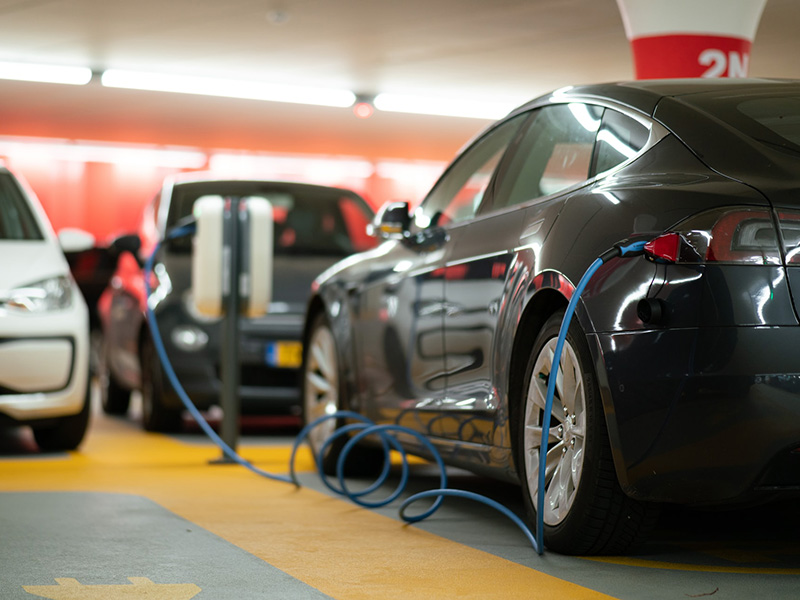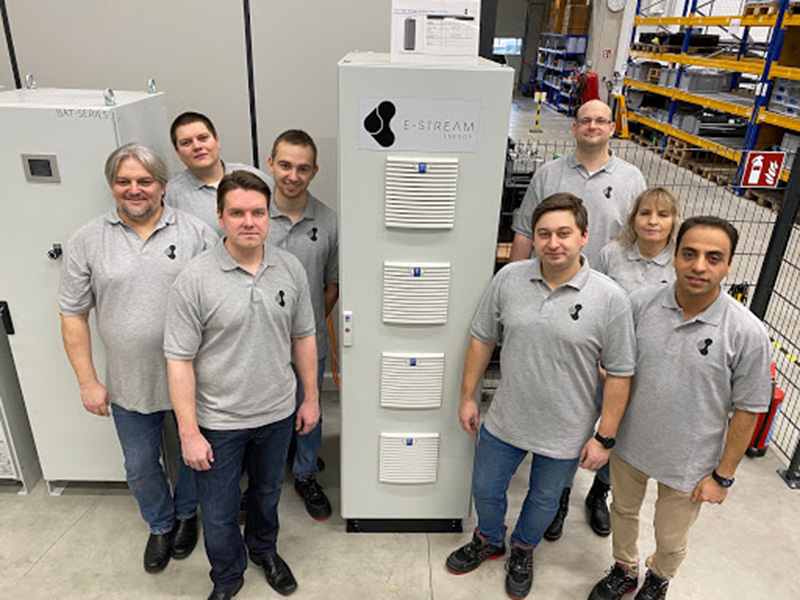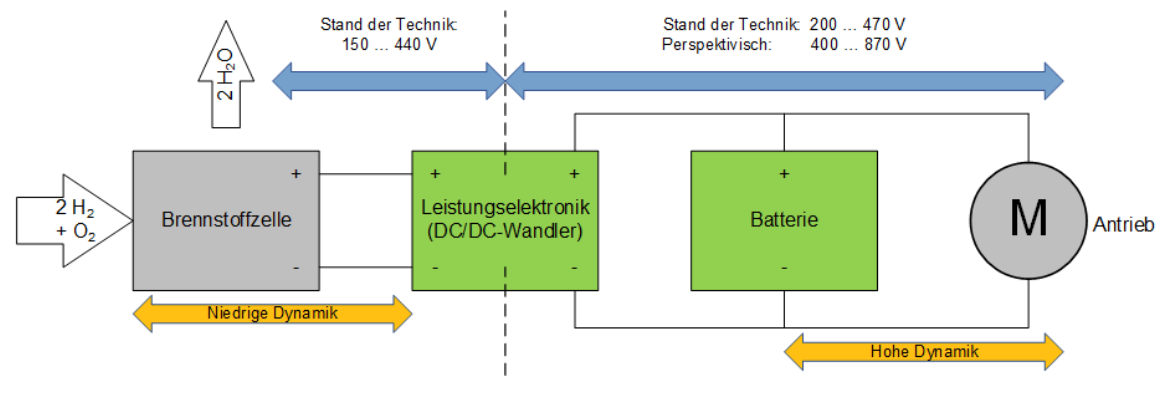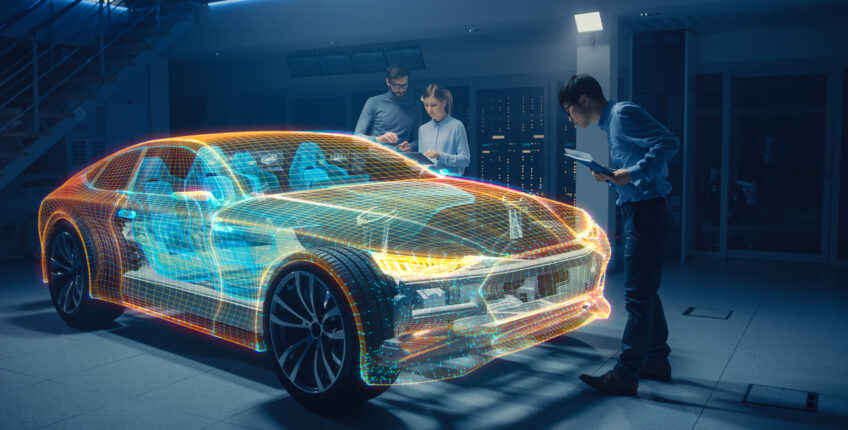H2EASY
H2-Integration in electric drive systems
Project partner in the funded project:
Liquid-cooled high-performance battery storage.
Fuel cell systems as energy suppliers for automotive powertrains show a need for improvement with respect to their system costs, system weight and volume in order to become attractive on the market. In particular, reducing the volume and weight of the energy conversion chain from the tank to the powertrain is a challenge, as these properties depend on the system performance. This requires innovative approaches, which will be addressed in this research project.
Dedicated tuning of system components using new technologies (such as GaN semiconductors, optimized power electronic circuit topologies, novel cooling methods, etc.) will enable a strong downsizing that can result in a modular system. These technologies (especially WBG (Wide Band Gap) semiconductors) have so far only been investigated on a laboratory scale, partially commercialized, and have been able to deliver extremely promising results there.
The proposed funding project should make it possible to transfer these technologies to automotive applications. If successfully completed, this will make a significant contribution to the volume, weight and cost reduction of critical vehicle components and thus to the marketability of non-fossil-fueled vehicles.
E-Stream's Role and Contribution
Development of a buffer battery system for fuel cell vehicles.
Motivation
The fuel cell (FC) is an excellent alternative to the established battery when renewable energy sources are used, but it has problems with rapid load changes as they occur in vehicle propulsion systems because of the relatively slow rate of change of its electrochemical response. The same problem also arises – on different scales – in the avian and maritime sectors. In the project proposed here, the energy conversion chain between the FC and the automotive propulsion system is to be optimized. The proposed optimization is based on the fact that FCs can operate most efficiently when operated in the partial load range and at a constant operating point. However, the drive of a motor vehicle exhibits strongly and rapidly fluctuating power requirements, which the FC cannot easily serve. It therefore makes sense to decouple the FC power output by means of a suitable buffer battery and associated power electronics). These components will be investigated in the H2 Easy project.

Objectives
- Weight reduction by splitting the DC and AC fluxes of the magnetic components by up to 50%.
- Reduction of semiconductor losses by at least 20% to 25%; thus additional savings and weight reduction in the area of cooling can be expected
- This results in cost reduction potentials over the lifetime of an electric vehicle of between 900 and 1,650€ per electric vehicle
- Reduction of the effective current ripple by a factor of 4, or to almost 0A through the technology approaches explained in this overall project description.


Project partner
- BMW AG
- University of Kassel
- SUMIDA Components & Modules GmbH
- HELLA GmbH & Co. KGaA
Funded by:
BMVI – Federal Ministry of Transport and Digital Infrastructure, PJT – Projekttäger Jülich.
BMVI – Federal Ministry of Transport and Digital Infrastructure, PJT – Projekttäger Jülich.

